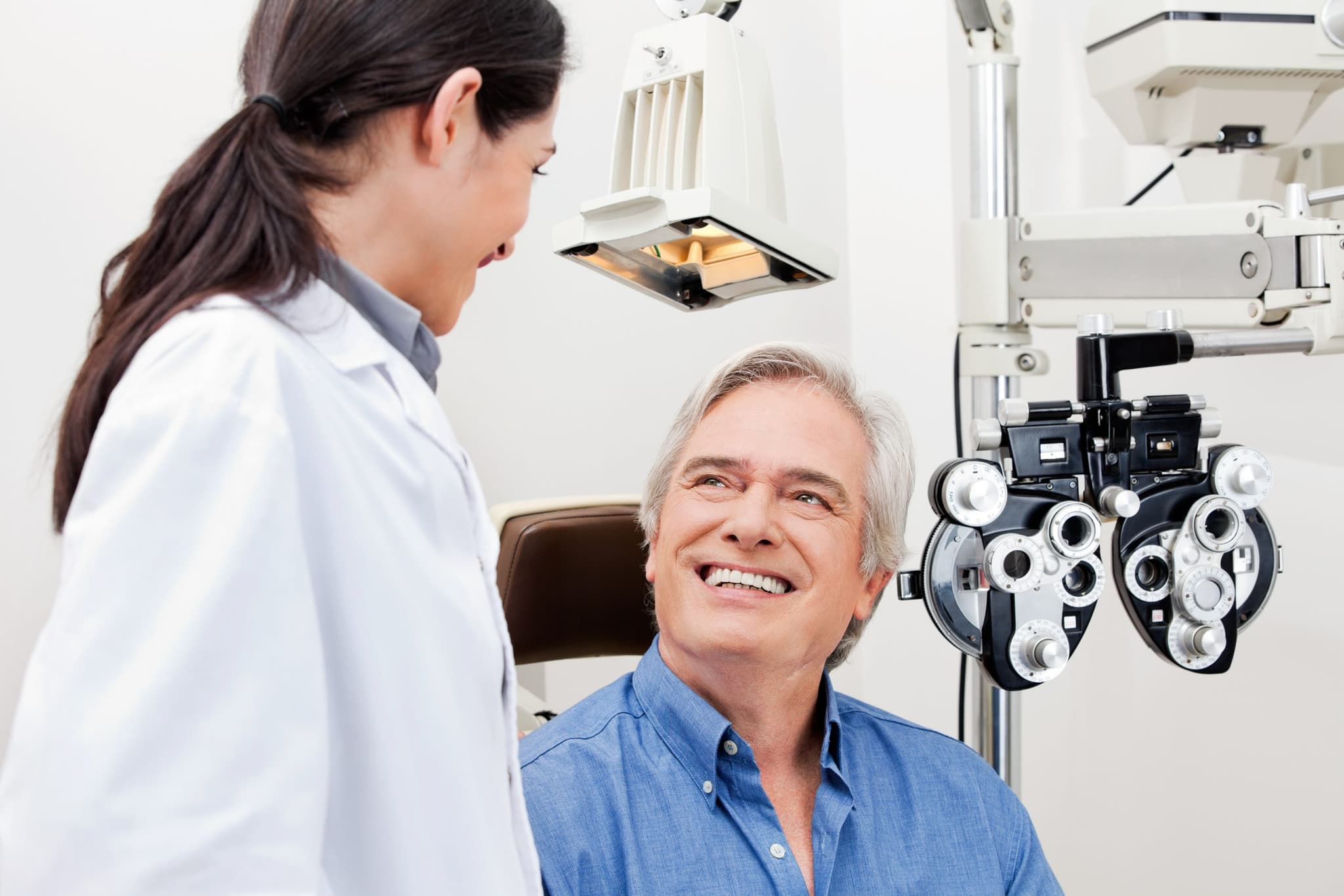Similar to a camera lens, beams of light hit the eyes and become focused to help us see images. When this happens correctly, the images are transmitted to the brain to provide a clear and focused vision. When there is interference, problems with vision can arise such as nearsightedness.
In medical terms, nearsightedness is called myopia, and it affects 30 percent of the United States population. Here’s a look at the symptoms, risk factors and treatment methods available for myopia.
How are eyes with myopia different?
Myopia is the inability to see objects clearly when they’re too far away. People with myopia can often read or see items within a few feet of their face, but distant objects appear blurred.
This condition usually develops in an eyeball that’s too long from front to back. Light rays entering the eye are supposed to focus directly on the surface of the retina, but if the eyeball is too long, they focus at a point just in front of the retina instead. This is what causes the blurriness of objects that are further away.
Causes and risk factors
The exact cause of myopia remains unknown. However, there are several factors that may increase your risk of developing the condition:
- Genetics: There is significant evidence that many of the underlying factors of myopia can be inherited from parents. However, it appears there are other environmental factors that play a role in whether these underlying factors actually lead to myopia.
- Age: Myopia tends to begin in school-age children, and can progress until around age 20 as the eye continues to grow. It’s also possible for myopia to develop in adults, though.
- Diabetes.
- Eye use: People who do a lot of reading or spend lots of time in front of screens could be at higher risk.
- Darkness: “Night myopia” is a related condition where the lack of light contributes to nearsightedness.
Diagnosis
There are a couple different tests that can be used to help determine how the eyes process light, and whether myopia might be present, including:
- Visual acuity test: This is a test many people are familiar with, which uses a distance chart with letters printed on lines in various sizes. The result is given in a two-part number—the first signals the normal distance at which the test is performed (20 feet away), and the second signals how capable a person is of identifying a letter that a “normal” eye would be able to identify. If someone has 20/30 vision, it means that they’d need to get within 20 feet to identify a letter that a normal eye would only need to get within 30 feet of to identify.
- Phoropter: A phoropter is an instrument that uses a series of lenses placed in front of the eye to measure their focus. This focus is measured using a device called a retinoscope. There are also automated instruments available that can check the focusing power of the eye.
Treatment
There are several treatment options for myopia:
- Eyeglasses: This is the most common form of treatment. Some people only need glasses for certain activities, like driving. These are typically single-lens glasses, though certain patients (people over 40, younger children or people who work in near-vision situations often) may need bifocals (two lenses).
- Contact lenses: Some people find clearer vision and a wider vision field than they can with glasses. Contact lenses require more upkeep, however, because they are placed directly on the eye.
- Laser surgery: Procedures like LASIK and PRK reshape the cornea by removing tissue from the eye.
- Ortho-k/CRT: Ortho-k, also called corneal refractive therapy, is a nonsurgical solution where you wear glasses designed to reshape your cornea over time.
- Other surgery: There are other refractive surgeries for people with extreme myopia, or for people who have corneas too thin for laser surgery. These surgeries include implants.
- Vision therapy: For people whose myopia is caused by a spasm in the eye muscles, vision therapy might correct the condition and allow you to better focus at a distance.
If you’re worried you or your child may be developing myopia, speak to your doctor about some easy, non-invasive tests to help diagnose your vision issues.
Revere Health Ophthalmology offers patients the best in eye care, from glasses and contacts to treatment of eye-related diseases and conditions.
Sources:
“Myopia (Nearsightedness).” American Optometric Association. http://www.aoa.org/patients-and-public/eye-and-vision-problems/glossary-of-eye-and-vision-conditions/myopia?sso=y#2
“Facts About Myopia.” National Eye Institute. https://nei.nih.gov/health/errors/myopia

